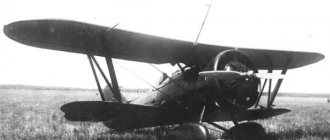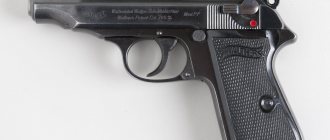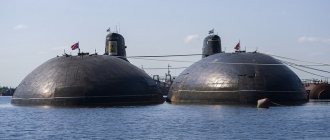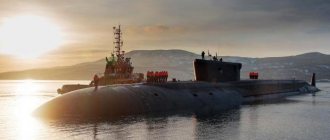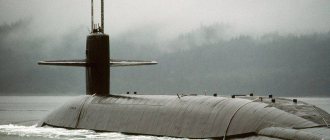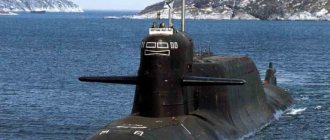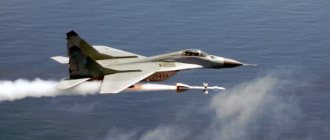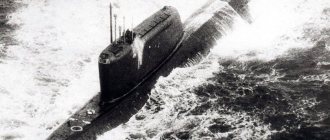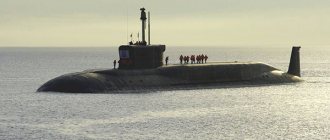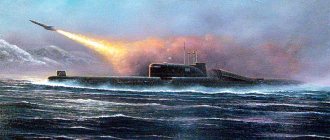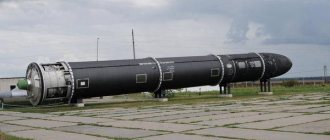The Ministry of Defense tested the operation of a unique automated control system (ACS) for aviation and ships. During the exercise, in real time at a distance of hundreds of kilometers, Tu-142 aircraft transmitted information about the mock enemy to the attack ships and launched a strike. At the same time, the automated control system itself identified the most important targets and decided how to destroy them. The new product is primarily intended for carriers of the latest Zircon hypersonic missiles. But it can also work with missiles of the previous generation - Yakhont, Vulkan and Caliber. According to experts, the new product radically increases the efficiency of the Russian Navy. The combination of the latest automated control system and hypersonic Zircons allows you to destroy entire enemy squadrons in a matter of minutes.
Automated exercises
As sources in the military department told Izvestia, the unique automated combat control system for aircraft and ships has already been tested. Testing was carried out during large-scale exercises of the Northern Fleet in early August of this year. According to the publication’s interlocutors, the new product will become one of the most important tools for controlling ships and submarines that carry hypersonic missiles.
Hypersonic combat: new superweapon will be tested in the field
What military developments based on new physical principles will take part in the maneuvers?
During an exercise in the northeast Atlantic, two crews of Tu-142 reconnaissance and anti-submarine aircraft discovered a group of mock enemy ships. Information about the target was transferred to the strike force. According to the issued coordinates, conditional electronic missile launches were carried out by the Northern Fleet cruiser Marshal Ustinov, the frigate Admiral Kasatonov, and the nuclear submarine Orel.
At the same time, the automated control system itself identified the most important targets and decided how best to destroy them, sources in the Ministry of Defense told Izvestia. In addition to the promising Zircons, ships controlled by the system can use cruise missiles of previous generations, including Yakhont, Vulcan and Caliber.
Last week, the head of the defense department, Sergei Shoigu, said that during tests by launching at sea targets, Zircon missiles demonstrated the highest accuracy, which leaves no chance for the enemy. Earlier, Deputy Defense Minister Alexey Krivoruchko said that state tests are planned to be completed this year and serial deliveries of the latest hypersonic ammunition will begin in 2022.
“Russia was the first in the world to receive hypersonic weapons, and a new automated control system is needed to fully reveal all its strengths,” says military expert Vladislav Shurygin. “At the same time, it will also receive information from radars and satellites. Once a target is detected, hypersonic speed allows it to be hit in a matter of minutes, even at a distance of hundreds of kilometers. During the flight time, the ships simply will not have time to go far.
Submarine-launched ballistic missile
Origin
The first practical design for a submarine-based launch platform was developed by the Germans near the end of World War II, including a launch tube that contained a variant of the V-2 ballistic missile and was towed behind a submarine known as the Prüfstand . XII
. The war ended before it could be tested, but the engineers who worked on it continued to work for the United States and the Soviet Union on their SLBM programs. These and other early SLBM systems required ships to be on the surface when launching missiles, but the launch systems were eventually adapted for underwater launch in the 1950s and 1960s. A converted Project 611 (Zulu-IV class) submarine was launched by the world's first SLBM, the R-11FM (SS-N-1 Scud-A, naval variant of the SS-1 Scud) on 16 September 1955[1] five additional submarines boats of projects V611 and AV611 (Zulu-V class) became the world's first attack ballistic missile submarines (SSB) with two R-11FM missiles each, entering service in 1956–57. [2]
The US Navy initially worked on a sea-launched version of the US Army's Jupiter medium-range ballistic missile, designing four large, liquid-fueled submarine-launched missiles. [3] Rear Admiral W. F. "Red" Raborn headed a special project office to develop Jupiter for the Navy beginning in late 1955. [3] [4] However, at the Nobska Project submarine conference in 1956, physicist Edward Teller stated that a physically small megaton warhead could be produced by the relatively small, solid-propellant Polaris missiles, [5] and this prompted the Navy to abandon the Jupiter program in December of the same year. Soon, Chief of Naval Operations Admiral Arleigh Burke concentrated all naval strategic research on Polar Earth, still under Admiral Raborn's Special Projects Office. [4] All American SLBMs were solid fueled, while all Soviet and Russian SLBMs were liquid fueled, with the exception of the Russian RSM-56 Bulava, which entered service in 2014.
Polaris A-1
The world's first operational nuclear-powered ballistic missile submarine (NSB) was USS George Washington (SSBN-598) with 16 Polaris A-1 missiles, which entered service in December 1959 and conducted the first SSBN deterrent patrol November 1960–January 1961 [6] George Washington
also carried out the first successful launch of an underwater SLBM with a Polaris A-1 missile on July 20, 1960. [7] Forty days later, the Soviet Union made its first successful underwater launch of a submarine ballistic missile in the White Sea, on September 10, 1960, from the same converted Project 611 submarine (NATO reporting name, Zulu-IV class) that first launched the R -11FM. [8] The Soviets were only a year after the US with their first SSBN, the ill-fated K-19 of Project 658 (Hotel Class), entered service in November 1960. However, the Hotel Class carried only three R-13 missiles ( According to NATO message SS-N-4) everyone had to surface and pick up the rocket for launch. [9] Submarine launch was not possible for the Soviet Union until 1963, when the R-21 (SS-N-5) missile was first converted to Project 658 (hotel-class) and Project 629 (golf-class) submarines. [10] The Soviet Union managed to surpass the United States in launching and testing the first SLBM with an active nuclear warhead, the R-13, which exploded at Novaya Zemlya in the Arctic Ocean on October 20, 1961. [11] just ten days before the explosion of a giant 50-megawatt " Tsar Bomba" in the same area. The United States eventually conducted a similar test in the Pacific Ocean on May 6, 1962, with a Polaris A-2 launched from the USS Ethan Allen (SSBN-608) as part of the Operation Dominic series nuclear tests. The first Soviet SSBN with 16 missiles was Project 667A (Yankee class), which first entered service in 1967, and by 1974 32 boats had been built. [12] [13] By the time the first Yankee was commissioned, the United States had built 41 SSBNs. nicknamed “41 for freedom”. [14] [15]
French M45 and M51 SLBMs in a cross-section of a submarine.
Deployment and further development
The short range of early SLBMs dictated their basing and deployment locations. By the late 1960s, the Polaris A-3 was deployed on all American SSBNs with a range of 4,600 kilometers (2,500 nmi), a significant improvement on the 1,900 kilometers (1,000 nmi) range of the Polaris A-1. The A-3 also had three warheads that landed in a pattern around a single target. [16] [17] The Yankee class was initially equipped with the R-27 Zyb (SS-N-6) missile, with a range of 2,400 kilometers (1,300 mi). The United States had much better luck with its bases than the Soviet Union. Thanks to NATO and US ownership of Guam, by the mid-1960s, US SSBNs were deployed forward to forward positions in Holy Loch, Scotland, Rota, Spain and Guam, resulting in shorter transit times for patrolling areas near the Soviet Union. SSBN facilities at forward conversion sites were strict, with only a submarine and a floating dry dock. Converted merchant ships, designated T-AK (Cargo Ships of the Military Sea Command), were provided to transport missiles and cargo to the field. With two rotating crews per boat, about one-third of all U.S. forces could be in the patrol area at any time. Soviet bases around Murmansk in the Atlantic and around Petropavlovsk-Kamchatsky in the Pacific required their SSBNs to make long passages (through NATO-controlled waters in the Atlantic) to mid-ocean patrol areas to hold the continental ocean. United States (CONUS) at risk. This resulted in only a small percentage of Soviet troops occupying patrol areas at any time, and was a great incentive for Soviet longer-range SLBMs that would allow them to patrol close to their bases in areas sometimes called "deep bastions". ". These were missiles of the R-29 "Vysota" series (SS-N-8, SS-N-18, SS-N-23), equipped according to projects 667B, 667BD, 667BDR, 667BDRM (classes Delta-I - Delta-IV) . . [10] The SS-N-8, with a range of 7,700 kilometers (4,200 nmi), entered service on the first Delta-I boat in 1972, before the Yankee class was completed. A total of 43 Delta-class boats of all types entered service between 1972 and 1990, including the Delta III-class SS-N-18 and the Delta IV-class R-29RM Shtil (SS-N-23). [18] [19] [20] [21] The new missiles had increased range and eventually multiple independently targetable missiles (MIRVs), multiple warheads, each capable of hitting different targets. [10]
Poseidon and the Trident I
Although the US did not introduce any new SSBNs from 1967 to 1981, it did introduce two new SLBMs. Thirty-one of the 41 original American SSBNs were built with larger diameter launch tubes to accommodate future missiles. In the early 1970s, the Poseidon (S-3) missile entered service, and 31 SSBNs were converted to it. [22] "Poseidon" offered a powerful RGVV with up to 14 warheads per missile. [15] Like the Soviets, the US also wanted a longer-range missile that would allow SSBNs to be deployed in a CONE. In the late 1970s, the Trident I (C-4) missile, with a range of 7,400 kilometers (4,000 nautical miles) and eight MIRV warheads, was converted to 12 Poseidon-equipped submarines. [23] [24] [25] The SSBN facilities (mainly a submarine tender and floating dry dock) at the base at Rota, Spain were eliminated, and the King's Bay Naval Submarine Station in Georgia was built for the Trident-equipped force I. [ citation needed
]
Trident and Typhoon submarines
Trident II rocket immediately after launch.
Both the United States and the Soviet Union introduced larger SSBNs designed for the new missiles in 1981. The American large SSBN was the Ohio class, also called the "Trident submarine", with the largest SSBN armament of 24 missiles, originally Trident I, but built with much larger tubes for the Trident II (D-5) missile, which entered service in 1990 year. [26] [27] The entire class was converted to use the Trident II by the early 2000s. Trident II offered a range of more than 8,000 kilometers (4,300 nmi) with eight larger MIRV warheads than Trident I. When USS Ohio (SSBN-726) began sea trials in 1980, two of the first ten American SSBNs had their missiles removed to carry with requirements of the SALT agreement; the remaining eight were converted to attack submarines (SSNs) by the end of 1982. All of them were in the Pacific Ocean, and the SSBN base on Guam was liquidated; Ohio class boats
used new Trident facilities at Naval Submarine Station Bangor, Washington.
Ohio
-class boats had entered service , [28] four of which were converted to cruise missile submarines (SSBNs) in the 2000s as required by the START I treaty. The Soviet large SSBN was the Project 941 Akula, known as the Typhoon (not to be confused with the Project 971 Shchuka attack submarine, dubbed the Akula by NATO). The Typhoons were the largest submarines ever built, with a submerged weight of 48,000 tons. They were armed with 20 new R-39 Rif (SS-N-20) missiles with a range of 8,300 kilometers (4,500 nautical miles) and 10 MIRV warheads. Six Typhoons entered service between 1981 and 1989. [29]
After the Cold War
Construction of new SSBNs stopped for more than 10 years in Russia and slowed in the United States with the collapse of the Soviet Union and the end of the Cold War in 1991. The US quickly retired the remaining 31 old SSBNs and some were transferred to other functions, and the base at Holy Loch was dismantled. Most of the former Soviet SSBNs were gradually decommissioned in accordance with the provisions of the Nunn-Lugar Cooperative Threat Reduction Agreement until 2012. [30] By that time, the Russian SSBN force consisted of six Delta-IVs, three Delta-IIIs and one. The Typhoon was used as a test bed for new missiles (the R-39, unique to the Typhoon, was reportedly retired in 2012). Upgraded missiles such as the R-29RMU Sineva (SS-N-23 Sineva) were developed for the Deltas. In 2013, the Russians commissioned the first Borei class submarine, also called the Dolgoruky
"by the name of the lead ship.
By 2015, two more were commissioned. The class is intended to replace aging Deltas and carries 16 RSM-56 Bulava solid-fuel missiles with a claimed range of 10,000 kilometers (5,400 mi) and six MIRV warheads. The US is developing a replacement for the Ohio class; however, as of early 2015, none had been laid down. [ citation needed
]
Ballistic missile submarines have been of great strategic importance to the United States, Russia and other nuclear powers since they entered service during the Cold War, as they can hide from surveillance satellites and launch nuclear weapons with virtual impunity. This makes them immune to a first strike against nuclear forces, allowing each side to retain the ability to launch a devastating retaliatory strike even if all ground-based missiles have been destroyed. This frees each side from having to launch under warning with the attendant risk of accidental nuclear war. Additionally, placing precision-guided missiles on ultra-quiet submarines allows an attacker to sneak up to an enemy shore and launch the missile along a reduced trajectory (a suboptimal ballistic trajectory that trades reduced throw weight for a faster, lower path, effectively reducing the time between launch and impact), thereby opening up the possibility of decapitation. [ citation needed
]
Looking down
The new automated fleet control system allows you to receive information about the enemy not only from aircraft. Intelligence data received from ground-based radars, satellites, and drones flows into it. The command sees the picture in real time and can make decisions on the use of ships, coastal missiles or naval aviation.
For several years now, Russia has been expanding its satellite constellation, which monitors the seas and the movements of surface ships in them. On June 25 of this year, the first active radar reconnaissance satellite Pion-NKS of the Liana system was launched into orbit. Using onboard radar, it can scan large expanses of water and monitor the movements of both military and civilian vessels at any time of the day or night, including through clouds.
In addition to the first Pion, the Lotos-S1 spacecraft, which are also part of the Liana system, have been operating in space for several years. They listen to radio broadcasts over the seas, intercept radio signals from warships and their equipment, which allows them to track their location.
In the last century, before the creation of a space constellation and automated control systems, reconnaissance of enemy ships and target designation of missiles was provided by special Tu-95RTs reconnaissance aircraft. Developed on the basis of strategic bombers, vehicles with powerful radars on board stayed in the air for up to a day and constantly patrolled the seas, the Pacific, Atlantic and Indian oceans. These aircraft have now been withdrawn from service.

